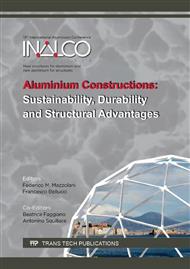p.198
p.204
p.210
p.216
p.222
p.231
p.238
p.244
p.250
Production Routes for Impact Extruded Aluminum Parts for the Automotive Industry
Abstract:
In the past months due to decreasing fuel prices the brisance of light weight design got lost, however climate change is still continuing and there is an increasing demand for aluminum parts for mobile applications. There is a strong rivalry between well-known materials such as aluminum, steel and plastic, however technical progress features new materials such as carbon fiber laminates (CFK). New competitors in North America and China are increasing the cost pressure, which requires further process optimizations. In this work different fabrication methods for impact extruded parts are analyzed and economical and technological aspects are compared. A comparison between traditional and state-of-the-art production routes is done. Based on an input-output analysis the alternatives are compared by economic and ecologic aspects, allowing a substantiated examination. Through the comprehensive analysis, options for technological optimizations are revealed to attenuate disadvantages of alternatives with economic advantages, ensuring technological leadership.
Info:
Periodical:
Pages:
222-227
Citation:
Online since:
September 2016
Authors:
Keywords:
Price:
Сopyright:
© 2016 Trans Tech Publications Ltd. All Rights Reserved
Share:
Citation:


